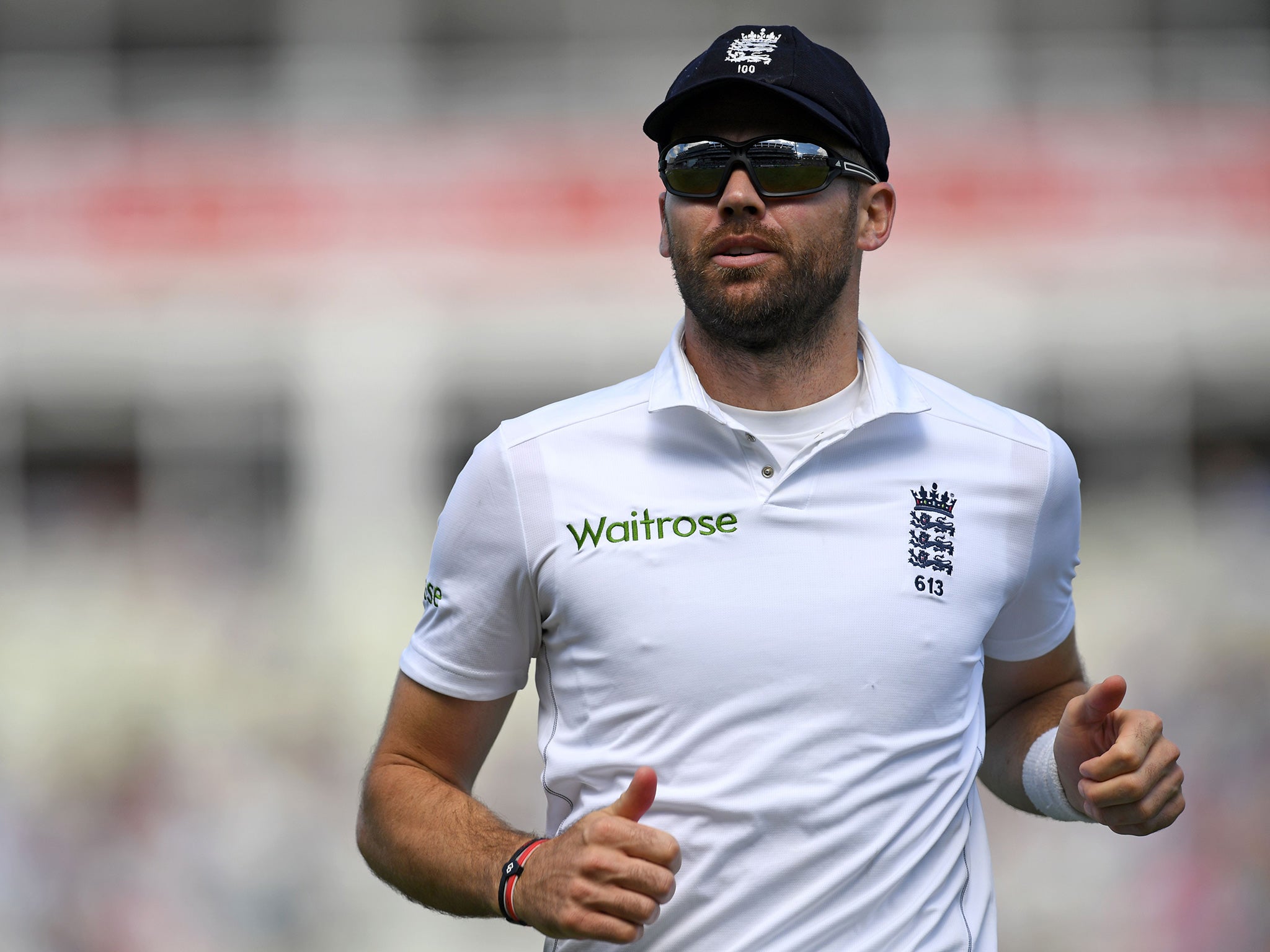James Anderson's absence gives England the chance to make some bold selections
Outside Edge: For England to lose their premier bowler is unfortunate, but it may allow the selectors to plan for a future without the 34-year-old

The withdrawal of James Anderson from England’s upcoming tests against Bangladesh is inevitably a blow. To lose a bowler of his experience could be nothing but. The man who might have benefitted most – Mark Wood – has also been lost to injury. As a result, Steve Finn has perhaps moved up the fast bowler pecking order, while Jake Ball has been added to the squad. He was arguably unlucky to miss out on selection first time round.
As is always the case when a stalwart misses out, thoughts will turn to a longer-term future without Anderson. At the age of 34, the veteran of 119 tests has recognised that his career needs to be well-managed if he is to continue playing at the highest level for several years to come. Careful management isn’t always enough, however: this will be the fourth time since the 2015 Ashes that he has missed test matches through injury.
At his best, of course, Anderson remains England’s premier bowler. His ability to shine in any conditions means the selectors will be desperate to have him fit for the subsequent series against India beginning in November. Still, he won’t be leading the line forever and others will be desperate to stake a claim to be his heir, which makes the withdrawal of Mark Wood – whose injury record is starting to look worrying – especially frustrating.
But while Ball and Finn will be keen to do all they can to secure a spot in the XI for Chittagong, Anderson’s departure from the scene could just as easily prove of interest to those competing for batting spots. After all, in Chris Woakes and Ben Stokes England have a potential new ball partner for Stuart Broad and a capable first change seamer – not to mention two more than decent batsmen. Adil Rashid, Moeen Ali and Zafar Ansari (or Gareth Batty if England prefer his experience) could all feature and there would still be room in the team for five front-line batters, including wicket-keeper Jonny Bairstow, Captain Cook, Haseeb Hameed, Joe Root and Ben Duckett.
Anderson’s loss is hardly ideal. But it offers England the chance to make some bold selections – it is a chance that must be taken.
New contracts system invites questions over incentives
The ECB has announced an overhaul of the central contracts system, the result of which will be greater rewards for players who feature regularly in white-ball cricket. In the past the system was plainly geared towards the test arena.
Superficially it makes obvious sense to better consider the needs of England’s limited-overs teams, bearing in mind the desire to build towards successful tilts at the Champions Trophy next year and the 2019 World Cup. Yet counties will worry about their white ball stars being pulled out of domestic games, no doubt contending that the rigours of a T20 are not comparable with a test match and that players don’t therefore require the same degree of ECB protection.
Yet perhaps the most intriguing change to the system is the notion that players’ remuneration will be judged against a ranking system which takes account not only of on-field performances but other factors too, including “off-field contribution, fielding and fitness”. So what exactly does this mean? Will those who speak up in team meetings bag more dough; will those who give into temptation by scoffing a cheeky doner be forced to cough up, as it were? Worst of all, will catches no longer win only matches, but also bags of extra swag?
Winter is coming, but that does not mean hibernation
With the county season now firmly at an end, clubs are turning their attention to the long winter months, when coffers need to stay full and players are forced to stay trim. Many clubs are tapping into the corporate Christmas party market. Sussex are offering a spectacular fireworks party at the County Ground next month.
For the playing staff, there will be little time for relaxation after a hard summer. The days of a second job between September and April are long gone. Now the onus is on continued fitness and conditioning before pre-season training really kicks in in the New Year. A more scientific approach is de rigueur. So much so in fact that Yorkshire are currently advertising for a “Sport Science Intern”, who will take up a position from October to April, reporting to strength and conditioning (S&C) coach, Ian Fisher.
The duties and responsibilities of the successful applicant are not insignificant, ranging from maintaining the gym to monitoring players’ “physiological status”. But there’s a livelihood to be made here. Fisher himself had a thirteen year playing career before he requalified, taking a degree in Sports Performance. Meanwhile, down on the south coast, Sussex have just waved goodbye to S&C coach Nick Lee, who has been appointed to a similar role with Sri Lanka.
And to think there was once a time when a bit of light stretching was deemed sufficient.
Subscribe to Independent Premium to bookmark this article
Want to bookmark your favourite articles and stories to read or reference later? Start your Independent Premium subscription today.

Join our commenting forum
Join thought-provoking conversations, follow other Independent readers and see their replies